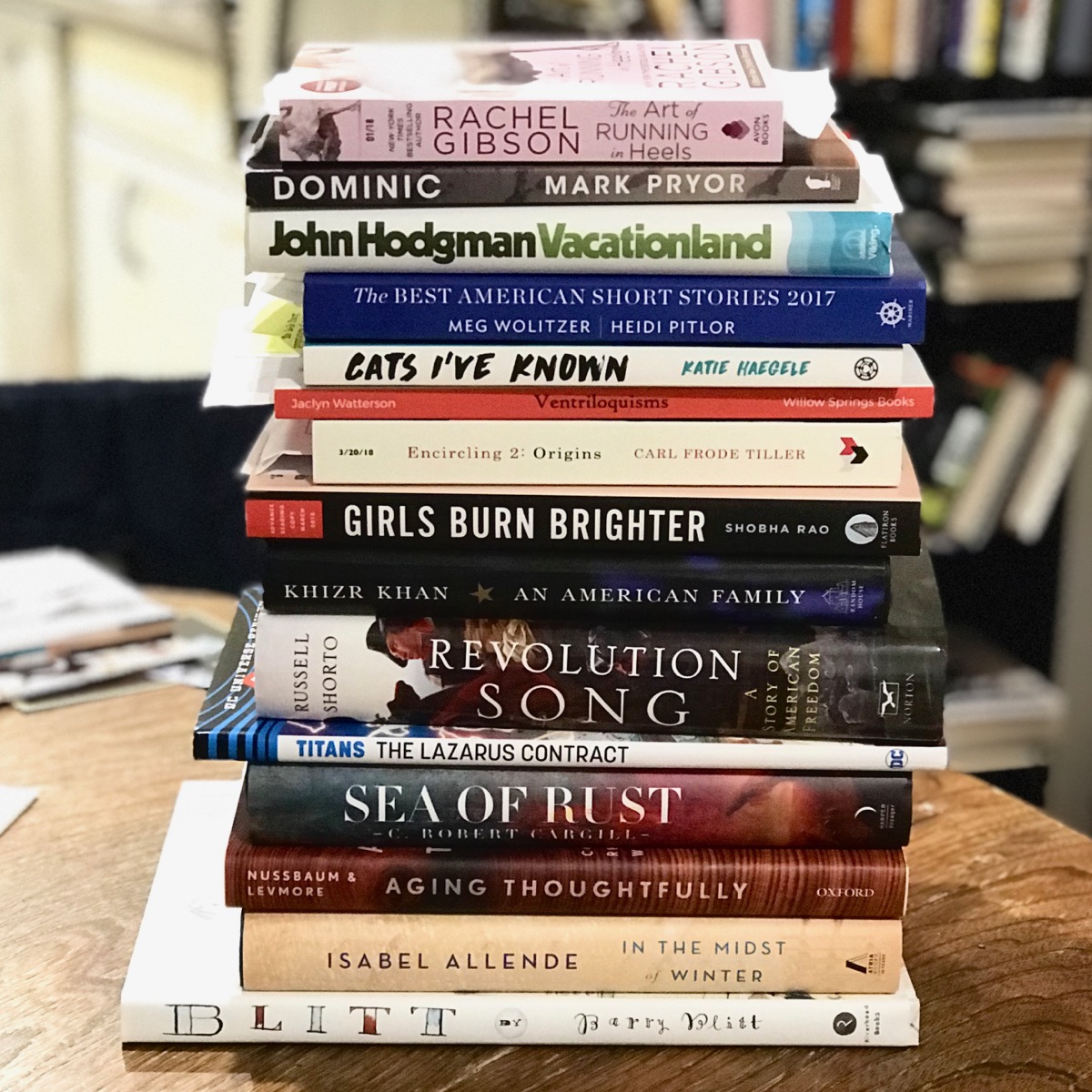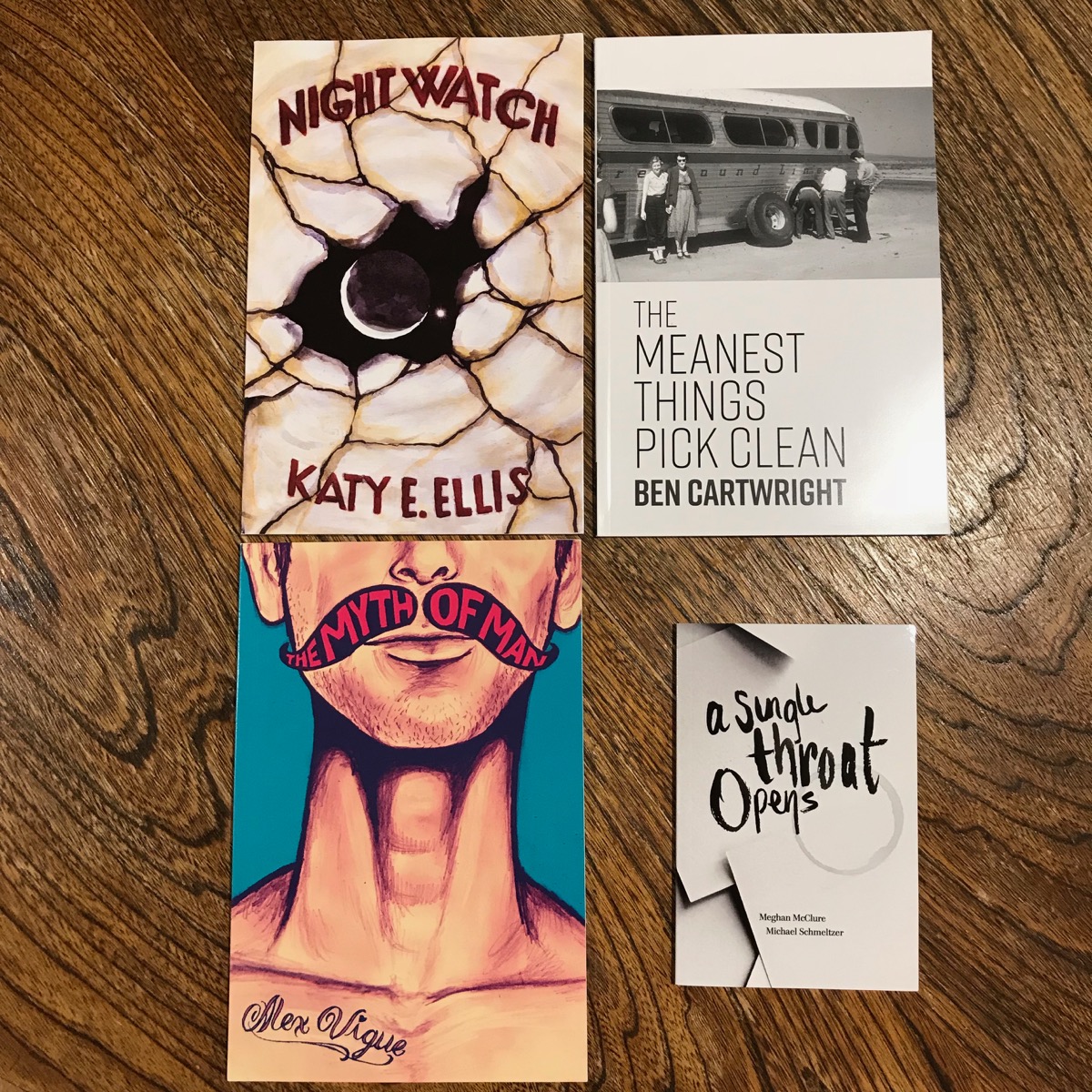Portrait Gallery: G. Willow Wilson (redux)
Each week, Christine Larsen creates a new portrait of an author for us. Have any favorites you’d love to see immortalized? Let us know
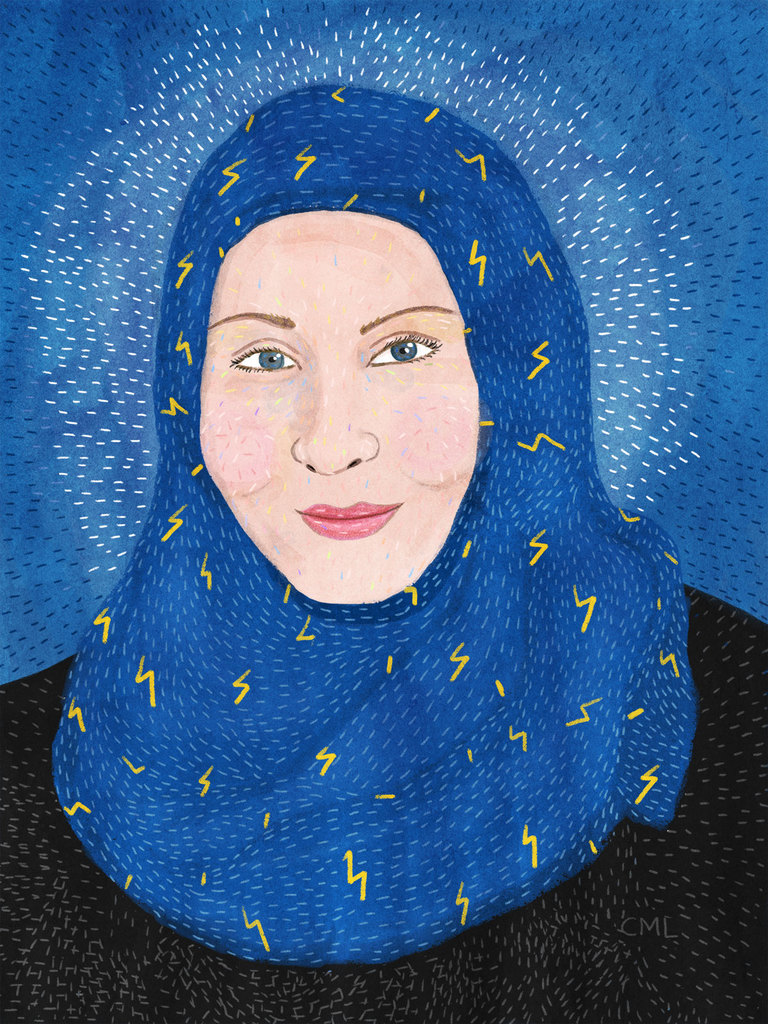
Monday, October 23: An Evening with G. Willow Wilson
Humanities Washington brings Seattle memoirist, novelist, and comics writer G. Willow Wilson to the stage for a conversation about creating the world’s most famous Muslim superhero, what it means to be a political writer, and how to juggle fame across two or three literary disciplines.
Langston Hughes Performing Arts Institute, 104 17th Ave S. 682-1770 x102 http://humanities.org. $20. All ages. 7:30 p.m.
Lit Crawl Itinerary #4: It's a small world, after all
Tonight is Lit Crawl, a bacchanalia of literary events spread over four courses across Capitol Hill, First Hill, and downtown. You can find the full schedule here, but we wanted to provide a few possible itineraries for people who have a hard time making up their minds. See you out on the streets tonight!
Here's Itinerary #1. Here's Itinerary #2. Here's Itinerary #3.

Phase 1: Your evening of writers outside of Seattle begins at Ada's Technical Books. Seattle author Kathleen Flinn tells the story of what happened when one of her books in translation hit the bestseller lists in Japan. She'll talk with her translator and Japanese editor over Skype to discuss the weird trajectory of her writing.
Phase 2: Then, go to Hugo House for a reading of writers from outside Seattle including Bellingham's Elaina Ellis and Tacoma's Jackie Fender. Keep an eye out especially for Hayat Norimine, who was born in Japan and grew up in Eastern Washington before moving to Seattle and taking over the Publicola politics blog.
Phase 3: Stay at Hugo House for APRIL Festival co-founder Willie Fitzgerald's conversation with New Zealand author Nic Low, who's here in town as part of a cultural exchange program thanks to the Seattle City of Literature program.
Phase 4: The last round of readings doesn't have an international component, so why not unwind with a showcase of humiliating true life events featuring Seattle writers Brian McGuigan, Kristen Millares Young, and Sasha LaPointe?
With each passing moment, The Snowman becomes less and less interesting
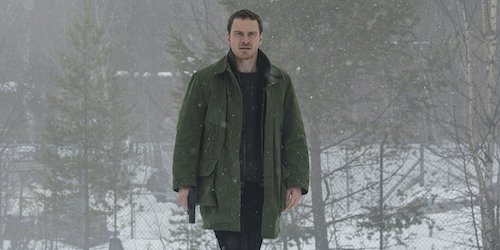
During the first few minutes of The Snowman, the new adaptation of the popular thriller from Norwegian crime writer Jo Nesbø, I felt as though I was in good hands. With an excellent cast — Michael Fassbender as Nesbø's alcoholic police detective Harry Hole, Charlotte Gainsbourg as his ex-girlfriend Rakel, Val Kilmer as a detective on the edge named Gert Rafto — and some truly beautiful cinematography, The Snowman's early moments felt like a perfect fall entertainment: a serial-killer flick filmed on location in Norway (one of the most beautiful countries on Earth, and I will fight you if you disagree.)
Even more encouraging, the film seemed delightfully weird. Hole, with his unzipped olive winter jacket and his plastic shopping bag full of clues, is prone to drinking himself to unconsciousness at night in public places around Oslo. Given that winter in Norway is usnpeakably cold, he seems to be committing suicide in the most half-assed, drawn out way imaginable. And Fassbender looks appropriately terrible as Hole: pale and thin and scowling and about an inch away from losing his mind.
The Snowman's first hour is full of bizarre and fun moments. Chloë Sevigny shows up for one of the oddest, most hilarious cameos I've ever seen outside of the 1966 Batman TV show. Kilmer's drunken cop is so offended by the joy of his coworkers that they literally drive him out on a ledge. The plot picks us up and drops us off at different times and locations without explaining what we're doing there, or why. It's a little disorienting, but it's interesting.
And then the second hour of the film rolls out, and it's one of the dullest, most generic serial-killer films you've ever seen. In fact, The Snowman strikes me as remarkable for the simple fact that it gets less interesting with each passing moment of its screentime. A chart marking my moment-to-moment interest in the film would be a perfect diagonal line from the top left corner of the chart straight down to the lower right corner. By the time the interminable last fifteen minutes rolled around, I just wanted it to be over before it transformed all the way into the worst Law & Order spin-off you've ever seen.
That said, the twitchy and somber score by Marco Beltrami is excellent. Longtime Scorcese associate Thelma Schoonmaker's hand is apparent in some of the film's interesting editing choices. And Dion Beebe's cinematography perfectly captures the raw, monstrous beauty of Norway in the wintertime. But as the film goes on, each of these good qualities dissolve into the sloppy beige of corporate filmmaking at its worst. Rarely has so much cinematic promise transformed into so much unmemorable dreck. Nesbø and Hole deserve better than this; hopefully Fassbender can reprise the role in a more suitable adaptation of another Hole thriller sometime in the near future.
Thursday Comics Hangover: Let the women speak
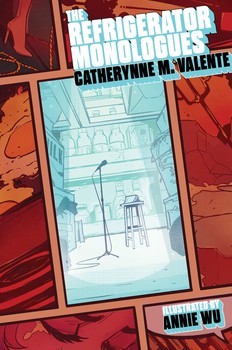
This week I want to talk about a book that isn't actually a comic book, but which wouldn't exist without comics. Catherynne M. Valenti's young adult short story collection The Refrigerator Monologues is an attempt to give voice to the often-neglected women who serve in supporting roles in superhero comics.
Refrigerator is structurally a riff on the Vagina Monologues with a superhero twist, and Valenti clearly knows her source material. The name comes from a superhero comic trope known as "fridging," in which a love interest's grisly death serves no greater purpose than really pissing off a hero, thereby giving him the motivation he needs to defeat the villain of the story. The book examines, satirizes, and deepens the cliches that women must endure in comics.
These are riffs on Spider-Man's first girlfriend Gwen Stacy (thrown off a bridge to her death by the Green Goblin) and Cyclops's girlfriend Phoenix (committed suicide after being tempted to the dark side by a cosmic being) and the Joker's girlfriend Harley Quinn (not dead, but often reduced to a punchline about codependency.) Valenti gets deep into the characters' heads, adding motivations and complex emotional responses to the crude stories mapped out in superhero comics of the past.
The framing story in Refrigerator, a club in the afterlife where wronged women can gather and tell their stories, doesn't quite go anywhere. And the book feels a little slight; it could use one or two more stories. But Valenti definitely ties together a thesis here, and she vindicates a whole rainbow of characters who have only gotten short shrift for the last fifty years. Hopefully next, she'll write a comic that puts these women front and center — without the men around to ruin everything.
Book News Roundup: Third Place Books will donate 20 percent of sales on Saturday to Puerto Rico relief
- Got a press release from Third Place Books yesterday that deserves a signal boost. Here are the opening paragraphs:
This Saturday (10/21/17), Third Place Books will donate 20 percent of sales at all three of its store locations (Laker Forest Park, Ravenna, and Seward Park) to relief efforts in Puerto Rico, which has been devastated by Hurricane Maria.
Proceeds will go to Unidos Disaster Relief Fund, sponsored by the Hispanic Federation, an organization that Consumer Reports says “has been reviewed and received high ratings from two of the watchdogs, Charity Navigator and BBB Wise Giving Alliance.”
Related to bookstores providing relief in natural disasters: bookstores in California are providing shelter to wildfire refugees.
Of all the reasons to pull a book from a school, "It makes people uncomfortable" is maybe the worst. The book? To Kill a Mockingbird. The school? It's in Biloxi, Mississippi.
This Wall Street Journal story about the decline of e-book sales and the smartening-up of physical book publishers is a feel-good story for people who love physical books. But it's important to remember that everything is not hunky-dory in booksville. Chain retailers are disappearing. Publishers are merging and re-merging and swallowing each other up to the point where we might have a corporate publishing monopoly in the next decade or so. I hate to rain on the parade, but now is not the time for a victory lap. Now is the time to be vigilant.
Your Week in Readings: The best literary events from October 18th - October 24th
Wednesday, October 18: Translation Is a Mode
As part of The Bagley Wright Lecture Series on Poetry, Seattle poet and translator Don Mee Choi “will discuss Walter Benjamin’s bread, Korean cornbread, warships, Ingmar Bergman’s The Silence, and Kim Hyesoon’s mirrors in her exploration of translation.” Translation is one of the most difficult-to-explain aspects of literature, and the experience of having a mind like Choi’s describe it for us is a blessing. Sorrento Hotel, 900 Madison St., 622-6400, http://hotelsorrento.com. Free. 21 and over. 7 p.m.
Thursday, October 19: Lit Crawl Seattle
See our Event of the Week column for more details.Friday, October 20: The Trade Reading
Journalist Jere Van Dyk was kidnapped in Afghanistan. After his release, his employers and the government weren’t telling him the truth behind what happened, so six years later, he went back to Afghanistan to uncover the real story. Tonight, the Washington native returns to read from his book about the whole harrowing, frustrating experience. PATH Auditorium, 2201 Westlake Ave., 652-4255, http://townhallseattle.org. $5. All ages. 7 p.m.Saturday, October 21: Experimental Animals Reading
Thalia Field’s new novel, Experimental Animals: A Reality Fiction, is based on the true story of Claude Bernard, a French vivisectionist who was married to an animal rights activist. Bernard also was the man who invented and popularized the scientific method. Field has committed two decades to the research in this project, translating work from French into English and piecing together the complicated history of a complicated man. Hugo House, 1021 Columbia St., 322-7030, http://hugohouse.org. Free. All ages. 4 p.m.
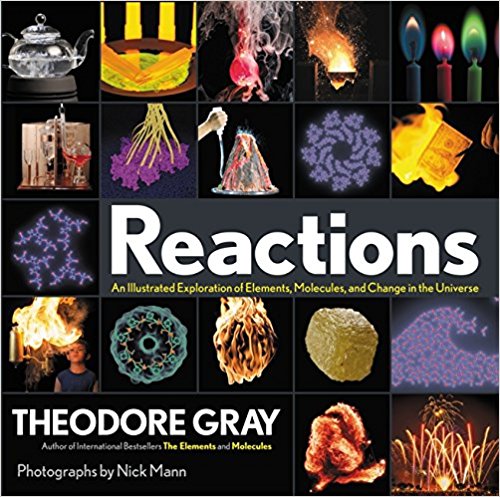
Sunday, October 22: Reactions Reading
You’ve likely seen Theo Gray’s gorgeous book The Elements, an illustrated guide to every one of the elements on the periodic table. His newest book, Reactions: An Illustrated Exploration of Elements, Molecules, and Change in the Universe, shows what happens when those elements combine:.basically, those reactions are responsible for everything in the universe. Rainier Arts Center, 3515 S. Alaska St., 652-4255. http://townhallseattle.org. $5. All ages. 6 p.m.
Monday, October 23: An Evening with G. Willow Wilson
You might know Mischa Willett from her poetry podcast Poems for the People. Humanities Washington brings Seattle memoirist, novelist, and comics writer G. Willow Wilson to the stage for a conversation about creating the world’s most famous Muslim superhero, what it means to be a political writer, and how to juggle fame across two or three literary disciplines.Langston Hughes Performing Arts Institute, 104 17th Ave S. 682-1770 x102 http://humanities.org. $20. All ages. 7:30 p.m.
Tuesday, October 24: Loud Mouth Lit
This special edition of memoirist Paul Mullin’s reading series is curated by Seattle Times reporter Brendan Kiley. Readers include David Schmader, Sydney Brownstone, and Anna Minard. They’ll all be talking on the theme of “political nausea,” which is a commodity that is in no short supply these days.
Saint Andrew’s Bar and Grill, 7406 Aurora Ave N., 523-1193. http://www.standrewsbarandgrill.com/Free. 21+. 8 p.m.
Lit Crawl Itinerary #3: All poetry, all the time
Tomorrow night is Lit Crawl, a bacchanalia of literary events spread over four courses across Capitol Hill, First Hill, and downtown. You can find the full schedule here, but we wanted to provide a few possible itineraries for people who have a hard time making up their minds. Come back tomorrow for the next itnerary. Here's yesterday's itinerary.
Phase 1: Your night begins at the new Ollie Quinn eyewear shop on Capitol Hill with the best possible way to start a poetic journey through Lit Crawl: a reading from Poetry Northwest, the longest-running poetry publication in the region. Readers including Sarah María Medina, JM Miller, and Ellen Welcker will share their work and celebrate the continuation of the tradition of poetry in the Northwest.
Phase 2: Weirdly, there's no poetry-only reading in the second phase of the evening. But that's okay. If you go to Barca, you'll find a celebration of graduates of the Hugo House's Made at Hugo program, which provides resources and networking for young Seattle writers. Former made at Hugo fellows Anca Szilagyi and Ross McMeekin, will be joined by two of Seattle's very best poets: Laura Da' and Quenton Baker.
Phase 3: At Still Liquor, Seattle-based poetry collective Margin Shift will present a lineup of poets including Adriana Nodal-Tarafa, Anne Tardos, Jennifer Firestone, and the fabulous Jamaica Baldwin
Phase 4: Your poetry Lit Crawl will come to an end at Vermillion, where former Civic Poet Claudia Castro Luna will present a reading celebration of her Seattle Poetry Grid. Readers who have contributed to the online poetry map of the city including Lynn Miller, Brian Roth, and Shin Yu Pai will share their geographically oriented poems.
Literary Event of the Week: Lit Crawl
Sometimes you just need to throw a goddamned party, you know? Sometimes you need to show off, and invite everyone over, and throw the fuck down. In the Seattle literary scene, Lit Crawl has become that party, the one-night shindig that lays everything out in one glorious buffet. Spreading across Capitol Hill, First Hill, and downtown, Lit Crawl takes place in bars and bookstores and event spaces in five different “phases” on Thursday, October 19th. Readings begin at 6 pm, 7 pm, 8, pm, and 9 pm, with an afterparty running from 10 pm to midnight at Zoë Events on E Union Street.
This is quite possibly the most diverse Lit Crawl since the San Francisco operation opened up a Seattle franchise back in 2012. It includes readings from sci-fi authors, mystery authors, kid’s books, poetry, cookbooks, and podcasts. There are readings highlighting African-American authors and Asian-American authors. Maori author Nic Low is in town from New Zealand as part of a cultural exchange. The amazing Anastacia Reneé, Seattle’s newest Civic Poet, is featured in a showcase. The Civic Poet who came before Anastacia Reneé, Claudia Castro Luna, will be presenting her final thesis — an online map of Seattle, told in site-specific poems.
I want to spotlight what must be the centerpiece of the night: Eileen Myles’s reading at Elliott Bay Book Company at 7 pm. If Myles isn’t the smartest, funniest, most important poet in America right now, she’s got to be right up near the top of the list.
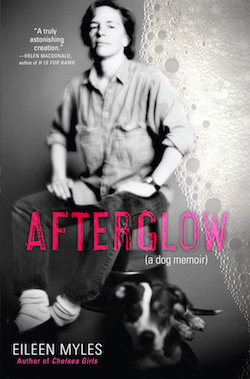
Myles has written about sex, gender politics, LGBTQ issues, Iceland, and the seeming inability of poetry to communicate anything at all. Her latest book is titled Afterglow (a dog memoir), and it’s Myles’s attempt to write an autobiography for her late, beloved dog Rosie. Unsurprisingly, the book is getting hammered by Amazon reviewers who expected the next Marley & Me and came away confused. One reviewer calls the book “Too much hard work” and whines “I found Myles' style to be the antithesis of poet Mary Oliver.” (Uh, thank God?)
So obviously you know what you’re doing on October 19th. But I have a question for you: what reading are you attending on October 20th? What bookstore are you visiting on October 21st? It’s easy to show up for the big, flashy parties, but we can’t have a community unless you show up for it on days when there’s not a giant festival going on. Fewer and fewer media outlets in Seattle are providing comprehensive and consistent arts coverage—which I define as reviews, news, and interviews—and the arts in Seattle is taking a noticeable hit for it. If the media continues to abdicate their responsibility as chroniclers of the entire scene—and not just the attention-grabbing parties—this city will suffer, venues will close, and artists will move away.
Simply: if you love books, and reading, and the fantastic literary community we have here in Seattle, you have to show up for stuff. Yes, come to Lit Crawl. Obviously, come to Lit Crawl. But be here all the time. If you’re not there for the community, you’ll one day turn around to discover that the community’s not there for you.
George Saunders wins the 2017 Man Booker Prize
Lincoln in the Bardo, George Saunders's debut novel, has won the Man Booker Prize. If you've already read Lincoln in the Bardo, I recommend you check out the audio book, which features an all-star cast including David Sedaris and Nick Offerman as a pair of mismatched spectral friends. I've listened to the book twice now, and I keep finding new things to enjoy. It's like an old-timey radio drama about Abraham Lincoln and sacrifice and what it means to embrace your mortality.
Armistead Maupin left me speechless last night
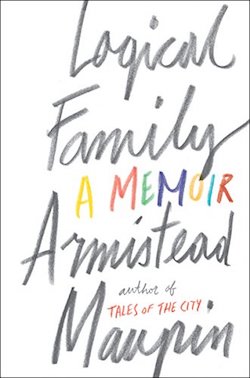
The one thing about hosting author interviews in public spaces is you've got to "yes, and..." the hell out of them. No matter what the author throws at you, you have to make it an additive experience. If they tell an anecdote about fox hunting, you've got to find the connective tissue to tie that anecdote to the next question somehow, even if the next question is related to the stock market. Dead air in an onstage interview is...well, death.
I bring this up because last night at Benaroya Hall, Armistead Maupin knocked me on my ass at least three separate times. I mean, he literally left me speechless. Maupin is a sweet and generous public speaker. He's kind in his recollections, he's full of explosive anecdotes and hilarious observations. And every few minutes, he'll say something so fantastically filthy that it'll make you laugh until the wind's knocked out of you.
Maupin fired off quips about sign language interpreters miming acts of masturbation, about oral sex, about orgies. A few times, those jokes were so quick and so funny that I had nothing to say in response. Maupin seemed to relish catching me flat-footed. The last time in the evening that it happened, he said "I saw the color was coming back into your face, so I decided to do something about that."
Of course, it wasn't all dirty jokes. We talked about why he decided to write his memoir, Logical Family, now ("I'm 73," he noted wryly, asking when else he was supposed to publish his memoirs.) We discussed how he feels about his legacy (he seems rightfully proud of what he did to represent gay and trans populations in mass media.) He shared whether he's comfortable with his role in the outing of actor Rock Hudson (yes, although Maupin admitted that he does have dreams where Hudson, a former flame, appears to him and says he's happy with how things worked out.) He talked at length about Barry Manilow and what it means to be a closeted artist.
Maupin also revealed that he's working with Netflix to create a television series based on his popular Tales of the City series. The series, he says, will be set in the present day and will track the lives of his most popular characters more than four decades after the publication date of the first Tales of the City strip in the San Francisco Chronicle.
If you've read all of Maupin's Tales of the City series, you'll likely want to read Logical Family. If you've never read a single word of Tales of the City, you'll find Logical Family to be a concise and fascinating introduction to Maupin's world. It's such a personal and specific book that it has universal appeal. I wouldn't be surprised to see it become one of his very best-loved titles.
The book tracks his early career as a writer — from the first thing he wrote as a toddler to his time as a writer of serial fiction in newspapers to his long path to bestselling novelist. And it also follows his transformation as a human, from his youthful conservatism to his stint in the Navy during the Vietnam War to his rebirth as a gay celebrity at a time when San Francisco was the most exciting city in the world.
Maupin writes freely about the drugs he took, the orgies he attended, the enemies he made. It's the kind of book that only a man who is satisfied with the course of his life could write. He knows who his friends are, and he knows his enemies, and he knows what his accomplishments are, and he's at peace with that. And if he can drop a few jaw-dropping sex jokes along the way? Well, that's just a bonus.
Going steady
Published October 17, 2017, at 12:15pm
Tara Atkinson's new book is about a nameless woman who dates faceless men.
Lit Crawl Itinerary #2: No white dudes
This Thursday night is Lit Crawl, a bacchanalia of literary events spread over four courses across Capitol Hill, First Hill, and downtown. You can find the full schedule here, but we wanted to provide a few possible itineraries for people who have a hard time making up their minds. Come back tomorrow for the next itnerary. Here's our first Itinerary from yesterday.
Tonight's Lit Crawl path is perfect for when you're sick of hearing white guys talk. (And really, in 2017, who isn't fucking sick of hearing white guys talk?)
Phase 1: Start out at Hugo House for the Seattle Urban Book Expo showcase. Local authors Kristin Alana, Kamari Bright, Natasha Rivers, and JL Cheatham II will present work that you may have seen at the increasingly popular literary event.
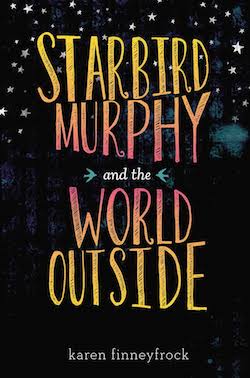
Phase 2: Next, head to Ada's Technical Books, where Seattle teen services librarian Tess Wilder-Cervantes hosts an evening with YA authors Karen Finneyfrock, Michele Bacon, and Breeana Shields.
Phase 3: Then, run down the hill to Barca for the Kundiman Fellows reading, featuring "some of the finest Asian-American poetry and prose writers in the PNW." Readers include Shankar Narayan, Neil Aitken, Jordan Alam, Kale Kim, and Troy Osaki.
Phase 4: Finally, at the Pine Box, Seattle poet Sarah Galvin brings two of her favorite poets to town: Bellingham poet and memoirist Robert Lashley and Oregon poet/musician Timmy Straw.
Farthermore
The child is no one. Her needs are
met. She’s bringing flowers to an idea.Of bees, there’s a hive the child tends —
fresh picked flowers on a made mound of dirt
packed in the shade of a dark green fire escape.As she picks (and puts) I think of a singing —
the voice itself a handrail up
to an altar in the middle of a church which once
with Olena I entered
how many summers ago,
where we crossed the hold between kindsof light and sat ourselves
like Protestants in an oiled wooden row.
We could have beenin Rome, our pair the only audience
in Santa Maria del Popolo, facing the facing
Caravaggios. I wish — but the child is no one. Her needs are
none that I know.
Cafe Racer to close on Wednesday
This note was just posted on Roosevelt bar/coffee shop Café Racer's Facebook page:
It is with great sadness that I have to say this...
Café Racer is closing.
The last night will be this Wednesday.
Lord knows the café has had it's ups and downs but it has been 14 years of art and music and community. No one can take that away from us.
But I just can no longer support it. It is still for sale, and I've had some offers, who wanted to carry on what the café is, but for one reason or another, they have falling through. Contact me if you are interested because the last thing I want is for the café to go away.
I'm sorry. This is the last thing that I wanted to happen.
Love,
Kurt
Presumably the "Kurt" in question is Racer owner Kurt Geissel. Geissel announced his intentions to sell Racer back in the spring of this year.
Café Racer has long been a home base for Seattle's cartooning community, perhaps most notably as the home for the Dune Night comics/zine-drawing jam session. It has also been home to readings, writing workshops, and countless folks working on their novels. The city is losing a literary hub this Wednesday.
Celebrate the launch of Melinda Mueller's latest on October 21
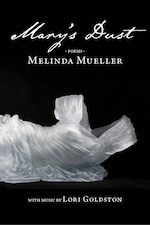
Make sure to save Saturday night, October 21, for the launch party for Mary’s Dust, a much-anticipated book by Seattle poet Melinda Mueller. Hosted by sponsor Entre Ríos Books, the event includes a reading by Mueller (and she’s a great reader, crisp, clear, and compelling) and live music by cellist Lori Goldston. You’ll also get a first peek at a new short film, in which local lights Laura Da', Christine Deavel, and Kathleen Flenniken join Mueller for a “making of.”
Mueller is a scientist, as well as a poet, and she brings the scientist’s gimlet eye to every line, digging into history for her subjects and transforming what she finds. Mary’s Dust re-tells the stories of 32 historical Marys — writers, actresses, physicists; risk-takers and rule-breakers. Entre Ríos has shared one of those Marys with our readers this week. Take a look at our sponsor page for an excerpt from the book, a sample of Mueller reading, and an early look at the new film.
Sponsors like Entre Ríos Books make the Seattle Review of Books possible. Did you know you could sponsor us, as well? If you have a book, event, or opportunity you’d like to get in front of our readers, reach out and let us know. We’d be happy to reserve a spot for you, even before our next block of dates goes public.
Lit Crawl Itinerary #1: The genre walk
This Thursday night is Lit Crawl, a bacchanalia of literary events spread over four courses across Capitol Hill, First Hill, and downtown. You can find the full schedule here, but we wanted to provide a few possible itineraries for people who have a hard time making up their minds. Come back tomorrow for the next itnerary.
Phase 1: Our first itinerary starts with a choice: are you a dystopian fiction nut, or do you like your sci-fi to be a broader deal? If you like dystopia, head to the Sorrento Hotel for an evening of postapocalyptic stories with readers Apple Plotnick Jannotta, Lynn Adams, and Johanna Stoberock. Prefer a wider scope on your speculative fiction? Saint John's bar is hosting Cat Rambo, Camille Griep, and Caren Gussoff Sumption.
Phase 2: Head to Zoë Events on Union for Meredith Clark, Katie Ellison, Leslie Frank, and Molly Thornton for a brisk 45-minute exploration of what genre can do. The copy for the event promises an evening that "traverses across memoir, essay, and less definable forms to create cross-genre and hybrid nonfiction."
Phase 3: It's October, so it's time for horror. Ramon Isao, J. Lincoln Fenn, and Evan J. Peterson haunt the house that is Ada's Technical Books with a reading of scary fiction.
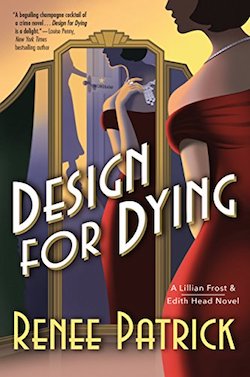
Phase 4: Your evening of readings ends at Hugo House with a mystery-themed event from Rosemarie and Vince Keenan (who publish pseudonymously as "Renee Patrick") reading from their novels of Hollywood, fashion, and murder starring iconic costume designer Edith Head.
Meet the cartoonist behind Seattle Walk Report: "If you want the worst time of your life, go on a walk with me."
Last week, Seattle cartoonist DW recommended a cartoonist who posts on Instagram under the pseudonym Seattle Walk Report. I’d never heard of her before, but when I looked her up I could easily understand why she was a favorite.
Seattle Walk Report’s cartoons track various data points from her walks through Seattle. She might count all the pumpkins she sees, or make a running tally of newspaper boxes, or notice that every single paneled parapet on the Montlake Bridge had its own spider web inside, or write little love notes to dogs she meets while walking around town. “I’ve been seeing a steady increase in sidewalk nachos,” she writes in one installment, “BUT WHERE ARE THEY COMING FROM?”
Seattle Walk Report responded quickly to a direct message, and she seemed happy to talk on the phone. The anonymity of her pseudonym isn’t iron clad: She identifies herself as in her late 20s and kindly offers her first name when I comment on how awkward it is to call another person “Seattle Walk Report.” But for reasons she explains in the interview, she finds the anonymity to be freeing.
What follows is a lightly edited transcript of our conversation.
How did you get started? Did the walking come first and then the cartooning? Or did they happen at the same time?
Well, they're both intertwined. Like many walks, I think, it’s a long story, so I might ramble a little bit here.
I was born and raised in Seattle, and I've never lived anywhere else — even for a second. I don't know how to drive, and I've never learned. So I've always relied on walking, or buses, or the kindness of others to get around. The walking component was not something I found much joy in until very recently; it was just a means to an end for much of my life.
But something happened earlier this year, and the pure joy of long, winding, destinationless walks really hit me. It was kind of like —, you know in cartoons, when somebody gets hit by a piano, and they wake up and there's birds over their head and their teeth are piano keys? It was kind of like that. I woke up one morning, and it just felt like something was different. And I would wake up on a day off, and I would leave with no destination. And sometimes nine, ten hours later, I would come back, and that was just how I spent my day. It didn't even feel like a conscious decision. It was just my mind and my body telling me to get out there.
I thought I knew Seattle really well, having never lived anywhere else, but I can honestly say that before I started to take the time to slow down and take these walks, I really don't feel like I knew the half of it. Or the quarter of it. I still don't know that I do. Seattle's really started to unfold in a way that I hadn't seen before. Or maybe I hadn't taken the time to see it before — I'm not really sure.
Anyway, I've always been a person who draws, and when I was little my mom would say that I was born with a pencil in my hand; and I believed her literally until I was an embarrassing 10 or 11 years old. I thought, ‘wow, that's a really cute coincidence', and, ‘ouch, that must have hurt.’
I just crossed my legs.
Yeah.
But anything I've ever done artistically has really just been pretty much for myself — just art for art's sake. In high school, I would spend weeks or months working on some little, tiny minicomic just for myself. I'd complete it, and I'd smile, and I'd put it on my shelf, and I'd move on to the next thing. It was always for me and never really for anyone else.
I always imagined that I would die and the guy with the push broom who comes to clear out people's apartments who have died would find this shelf full of comics and books and all this crazy stuff that I had made that I had never shared with anybody. I imagined him with his push broom being like, ‘Whoa, this is some weird stuff.’
In addition to drawing, I've always really loved mundane data. Like the library has a subscription to a database called Statistica. It has a really great search functionality, so sometimes I'd just sit there and type in ‘Funions,’ and I'll see the average American household ate two or less bags of Funions in 2011. I just loved that kind of thing.
So walking really made me reconnect with Seattle, and reconnecting with Seattle made me walk. It was this really satisfying loop, and that was my first revelation. Then my second revelation came when I realized I could combine this love of walking with drawing and with data collection.
I thought it would be another one of those projects that I'd be happy to keep to myself, like some sort of journal or something. Because after a while the walks kind of all start to blur together. So I thought this would just be a fun way for me to remember these walks, and where I went, or what I saw on them, or how many crosswalks I crossed, or that kind of thing.
I decided one day to go out and just record what I see. I didn't have some deep goal in mind with it. And when I got home, I turned it into a drawing, and I wrote "Seattle Walk Report" at the top without thinking about it.
I closed my notebook that I had drawn it in, and I just felt this overwhelming sort of — it felt like there was something there that needed to be said about Seattle that wasn't being said. And for the first time with anything I've ever done, I really felt like this drawing needed to be somewhere for somebody else to connect with and see.
So I downloaded Instagram for the first time in my life, and I registered Seattle Walk Report. I posted it, not thinking anyone would ever see it or ever care, but wanting to know that it was there for people to see and care about if they felt like it.
It just went from there. The feedback loop grew stronger in terms of me walking to draw and drawing to walk in Seattle. It all just kind of wove together into this perfect little thing.
I didn't tell anyone I was going to do it. I didn't come up with a cute name first, and then try to figure it out. I just did it, and I didn't have a fully formed idea of what I was doing. I still don't. It's evolved so much. It was just born out of walking, and raised by walking, and will probably die by walking. Anyway, that's the long, winding story of it all.
That's fantastic. What do you think, specifically, about the evolution when you look back on the last four months, five months? How long has it been?
I think July 1st was when I started it. When I first started out, I felt this desire to use the knowledge that I have of Seattle's neighborhoods to impose my own ideas about what might unfold during that walk, instead of just letting the city be whatever it is that day. I would actively seek out certain things at the detriment of actually seeing what was there.
In one of my earliest ones, I knew I was going to be walking around in South Lake Union so I was like, ‘okay, I'll probably see closed sidewalks, and I'll probably see Starbucks cups on the ground, and I'll probably see some baby ducks.’ And so I went out to tally those things, since it seemed like I would probably find them there, and that's fine. But it was almost like I was writing a narrative and pigeon-holing the walk, or the place, before even setting out on it.
Once I let go of that sort of narrative, and just started to walk with no preconceived notions of what I would see, I think things just really started to pop off. Right around the time that I let go of that, people started commenting, ‘This one was really good.’ Or, like, ‘this has really gotten a lot better.’ Then I did start to put more effort into it, because before I would just do it over 15 minutes on my lunch break.
I actually just found out about you last week, because a cartoonist named DW who moved to Seattle just a few months ago recommended you as one of his favorite cartoonists.
That's so nice.
I've been doing long walks for a few years now, and I've written a little about it, and every once in a while I'll tweet while I'm out on a walk or something. And people have told me, "You should write a book about this." And I love walking, but the point of walking is to be sort of monotonous, right? It's literally one step in front of the other. But the way you handle it, I think, is really interesting.
It really speaks to me about the quotidian nature of walking, and just what it's like to go out on a walk and to observe at a very natural, very slow pace. Have your cartoons always been sort of like data collection or did you just start doing that with the walking?
There's always been kind of an element of that. I’ve always been interested in taking things that people think they know and adding some sort of new layer to it. I've found through this that there are other people out there doing this exact same thing in a different way, moreso than I realized.
Like the number of messages I've gotten from people who are like, ‘oh, my gosh, I thought I was the only person who always remembered my favorite dog I saw on a walk.’ Just that there are other people out there quietly doing this exact same thing in their heads. And that's pretty cool — to find that kind of quiet community out there, and kind of bring people together. I was not expecting the response to be what it was. I really thought I'd be playing to an audience of myself, just in as more public way than I normally do.
And so to have people resonate, to have it resonate with people, and have people message me and say, ‘you're my hero’ and ‘this has changed how I see Seattle’ — it just blows my mind a little bit.
So you have over 700 followers on Instagram. How did those numbers grow? It's been a relatively short time. Did you get everybody all at once or have there been little plateaus, or what?
It's been super, super steady from the beginning. Every day a couple more people. I haven't had one day where I wake up and see that I’ve gotten 100 people — nothing like that. I think people find it just by stumbling on it, or people hear about it from somebody else. It's been kind of a word of mouth thing.
There are people who know me really well who don't know that I'm doing this. There are people who I work with who follow me, and they don't know that I am this person I don't see myself as part of the Seattle comics community, because I've never met anybody in it or gone to any of the things that you're supposed to go to if you're part of that. But I have followed certain Seattle cartoonists that I stumble across [on Instagram], and then they'll follow me back and that kind of thing. So it's just been a steady sort of growth.
So, say you inspire somebody to walk, which I imagine has probably happened. Is there any walk that you would recommend as a particularly surprising one for people want to get a feel for Seattle as a walking city?
This might be a little bit long for the new walker, but I'd say give it a shot and see what happens: I really like the South Lake Union walk. I like walking around South Lake Union — starting near MOHAI and going the entire way around — because you get to see such a variety of things. It's a relatively flat walk. There's Gas Works along the way. There's Fremont. You get to go over bridges. You get to go under bridges. It's relatively quiet. There's nice views. Especially if somebody is new to the city in general, I really recommend that walk just to get a feel for the sort of sights there are to see around.
Discovery Park — for some reason, growing up I didn't spend a lot of time there, and so I've discovered it for the first time. I'd recommend either just walking to Discovery Park from wherever you are, or taking the bus there — driving there, whatever — and giving that a shot. Because that's another place that has a lot of variety, and beautiful views.
I'd also say to walk down Airport Way and see what happens. If you like interesting trash, and sights, you can achieve a good sort of rhythmic zen state on Airport Way.
There's also buses everywhere so you can take back if you get tired.
Yeah. And definitely on the South Lake Union walk, there's multiple points where you can just bail on it.
And there are public bathrooms at MOHAI, and again at Gas Works Park. Because bathrooms are a real concern on these long walks.
PCC in Fremont has bathrooms that they don't care if you use all day every day.
I'm sure they'll be pleased about you telling people that. But it's important! There aren't a lot of open restrooms. In October through April a lot of the public park bathrooms just close down. Because you obviously don't need to go to the bathroom from October to April.
Yeah.
Weirdly, even though you’re anonymous, I think that you're a really good ambassador for walking in the city. Even though you don’t use your name, the work feels really personal.
I think when I first really grasped on to what it was that I was doing, I realized that being mostly anonymous enhances my ability to be an invisible observer, and just to report out. I think that really strengthens the work.
If you were a walker, too, it's probably likely that we've stood at the same crosswalk or walked by each other. I think that's kind of like a cool, human thing. And I like being able to be amongst people at any time and have them not know who I am, or what I'm doing, even if they are one of the 720 people who know my work.
So I don't mind sharing certain things about myself or my comics, and people can certainly figure out a lot about me and what I care about through my comics. To know Seattle Walk Report is to know me pretty darn well. I don't know if readers would have a greater appreciation or understanding of Seattle Walk Report, if they knew my face, or my job, or my favorite Beatle, or whatever. I don't know. We'll see.
There is certainly anonymity to walking. Every once in a while I will see older versions of me out on the Interurban Trail and we’ll nod to each other, but generally, I don't recognize anyone. When I started doing this, I thought I was very much alone. I thought I was the only human being who has walked from Westwood Village in West Seattle to Shoreline, from city limits to city limits across the city diagonally, in a single day. But now I'm starting to realize that there is this culture out there. And hearing you talk about it certainly has helped solidify that there is a walking culture here. But it's a culture of people who like to be alone.
Yeah.
One of the first things people will say when I talk about my walks is, ‘oh, we should go walking together sometime.’ And it always makes me uncomfortable to respond ambivalently, but part of the reason I do these walks is to be alone. Has that happened to you too?
So many people have messaged me on Instagram saying, ‘we should go on a walk sometime.’ And I'm like, you have no idea how — first of all — how horrendous that would be for you.
If you want the worst time of your life, go on a walk with me. I'll just pop in my headphones, and get out my notebook, and ignore you for six hours. And you'll be exhausted, or you will have left hours ago, and I'm still walking, and I didn't even know you were gone.
I really appreciate people reaching out to me, but I do think it is such a solitary venture. Maybe sometime I can go on a walk with somebody where they go on a walk, and I go on a walk, and we're not together; and we just report back on what we saw, and that can be spending time together. That would be perfect situation for me.
Do you enjoy nature walks, too? I know you mentioned Discovery Park, but that's walkable from the city. Have you ever been the sort of person who's into hiking?
Not really. I'm definitely more of a city walker. I definitely appreciate the contrast, but I think I really like to fill out the map in my mind. I really like to think ‘there's no way I could get from Woodinville to the U District,’ and then go do it.
The Sunday Post for October 15, 2017
Each week, the Sunday Post highlights a few articles good for slow consumption over a cup of coffee (or tea, if that's your pleasure). Settle in for a while; we saved you a seat. You can also look through the archives.
Rebecca Solnit on Harvey Weinstein, Hillary Clinton, and Blaming Women for the Acts of Men
How to excerpt Rebecca Solnit’s supremely satisfying and hilarious (sort of, ha ha that’s funny) tirade about the mountainous blamefulness of women? In short, Harvey Weinstein is our fault, Velcro is our fault, frowning, the Black Death, Donald Trump, also not being Matt Damon. Donald Trump, Donald Trump? Born, after all, to a woman. The fault is ours.
I always suspected it was so.
It is Anita Hill’s fault that Clarence Thomas is a creep, and it’s also her fault that he’s on the Supreme Court, and it’s her fault she didn’t speak up about his sexual harassment, and also her fault that she did speak up about it, ruffling important waters when men were trying to fly-fish them, as women do when men try. To fly-fish that is, and the trout that are not biting are the fault of the woman who did not smile at you on the bus this morning, though it is a gospel truth that lady strangers owe you smiles. If we study up, it may be possible to figure out which parts of everything are Anita Hill’s fault. Mary Todd Lincoln: perhaps her faults linger on, and it would be fun to blame her for something, and why did Michelle Obama choose to exercise her right to bare arms? Perhaps that makes her responsible for some mass shootings, which tend to be carried out by men, but not their fault. Someone made them do it, and every time a man does something awful we can all pause for a moment of respectful silence while we figure out who to blame.
Additional reading: Laurie Penny on consent and rape and technicalities and anger.
Here's Why Debunking Viral Climate Myths Is Almost Impossible, In One Animated Chart
One thing quickly becomes clear if you write a weekly list of links (or just read Twitter): the Internet is a regurgitation machine, spitting out the same stories from a thousand mouths, and again, and again. At this volume, the news is little more than an impression, quick takes turned gospel.
Who better than BuzzFeed News to explain (in simple graphics under a clickbait headline) exactly how the rinse-and-repeat online content cycle makes fake news real? Zahra Hirji and Lam Thuy Vo tracked the social progress of a misleading article about climate change across almost a million interactions. Every share and spinoff increased its truthiness, though not, unfortunately, its truth.
The story centered on a two-year-old Science study showing that the rise in global temperatures had not recently stalled, as previous data had suggested. The Science paper had repeatedly been attacked by climate skeptics, including House Science Committee chair Lamar Smith (R-Tex.). After the Mail on Sunday’s piece, Smith demanded, for at least the sixth time, that the National Oceanic and Atmospheric Administration turn over its correspondence about the Science data.
Now, some seven months later, the Mail on Sunday has begrudgingly admitted its story was wrong. But will this update change anyone’s minds?
Additional (necessary) reading: Alexis C. Madrigal’s good, solid reporting on Facebook’s role in putting Donald Trump in power, which, as both a compelling read and a thorough historical analysis, shortcuts several spins in the regurgitation cycle for this particular topic.
Death at a Penn State Fraternity
Caitlin Flanagan investigates Beta Theta Pi pledge Tim Piazza’s death, which came after 12 hours of struggle while his frat brothers sat by — more worried about their liability than his life. Mesmerizing article on a culture dominated by power and privilege, and deeply committed to maintaining both.
All of these dynamics came into play the night Tim Piazza was fatally injured. The chapter president, Brendan Young, was — get this — majoring in risk management. He fully understood that officers of the fraternity face greater liability than do regular members. He became the president in November 2016, and shortly before rush began, in January 2017, he texted Daniel Casey, the pledge master: “I know you know this. If anything goes wrong with the pledges this semester then both of us are fucked.” He wasn’t suggesting they scrap hazing; he was reminding his subordinate that they had better not get caught doing it. (Young’s lawyer declined to comment.)
Murder by the Book
This week in personal essays: Jordan Fuller remembers Portland’s Murder by the Book, a mystery bookstore managed by her mother, and walks us through the dark streets of her childhood reading.
My television and film diet was closely monitored but I had no restrictions on what I could read as a child. I fell under the spell of Jack the Ripper, drawing macabre maps of 1888 Whitechapel with the names and relevant details of his victims. Did I make the connection then that the Ripper was stealing the women’s uteruses? Did I know then that they were prostitutes or what that meant? I must have, because I was a child who did not like the feeling of not knowing — words, concepts, reasons — so I must have scanned the dictionary and found what I was looking for. I don’t remember having that conversation with my mother, though I doubt she would have shied away from it.
Dirty John
Christopher Goffard’s Dirty John podcast makes it in on a technicality; it can be read, as well as heard, on the Los Angeles Times website. Debra Newell met the man of her dreams online and was soon trapped in a nightmare of manipulation, deception, and self-deception. The six-part story maps how “Dirty John” seduced Newell, wedged himself between her and her children, and then — well, it’s a familiar tale but will be impossible to put down, for those who love true crime or are fascinated by the darkness and brightness of the human heart.
By the second or third date, he was telling her he loved her, that he wanted to marry her. She didn’t mind his idiosyncrasies, like his habit of wearing his faded blue medical scrubs everywhere, even to a formal-dress cancer benefit she invited him to. Some people snickered, but she thought, “Busy doctor.”
“So you are the real thing,” she texted him after one date.
“Best thing that will ever happen to you,” he replied.


